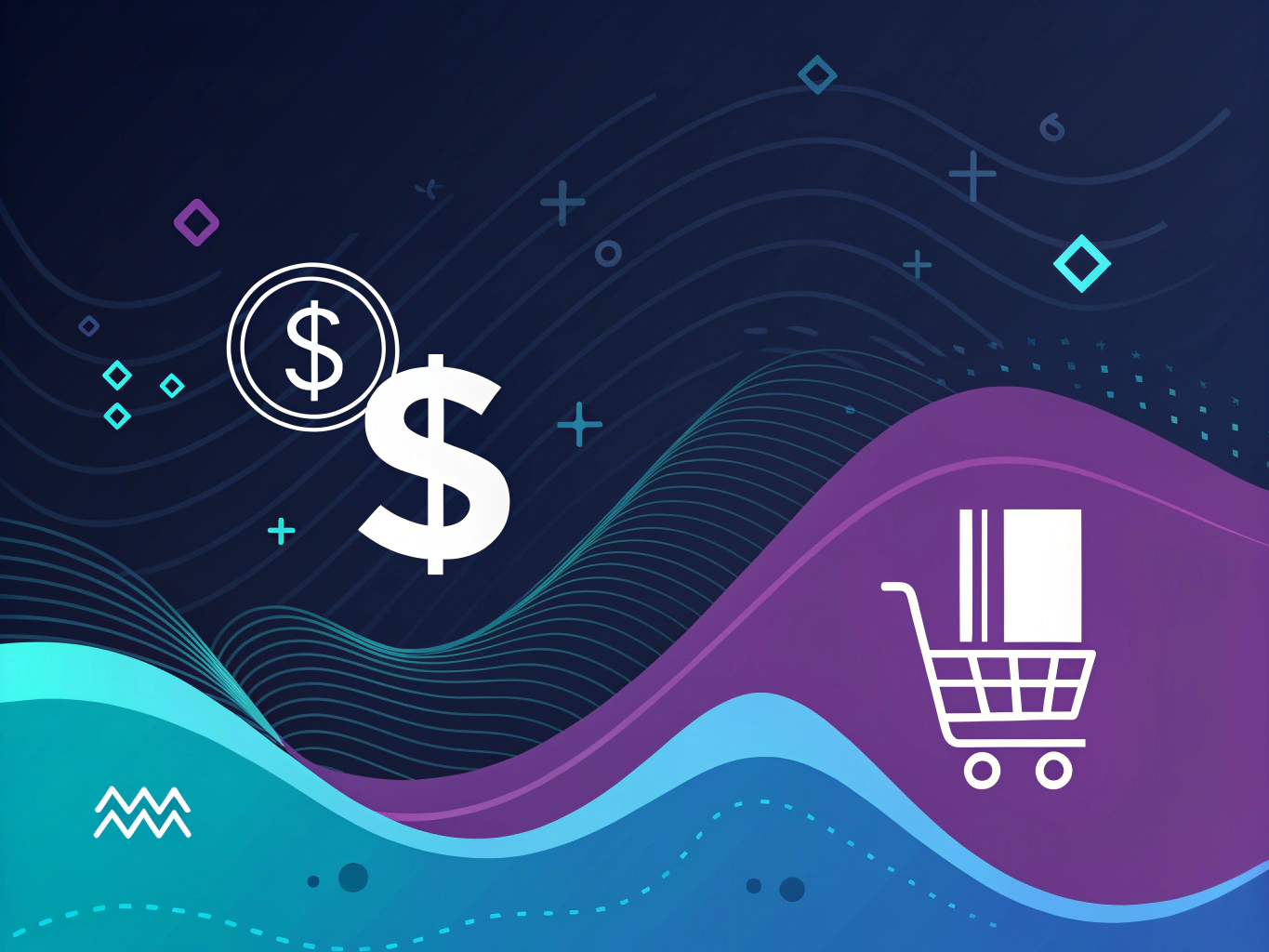Let’s talk about something that’s been driving me crazy lately – the wild misconceptions about selling books on Amazon. You’ve probably seen those viral social media posts: “I made $10,000 in my first month selling books!” or “Just scan books at thrift stores and become a millionaire!”
Reality check: while selling books to Amazon can absolutely be profitable, it’s not the get-rich-quick scheme many “gurus” make it out to be. It’s more like building a well-oiled machine – one that requires understanding Amazon’s ecosystem, smart inventory management, and yes, actual work.
The Truth About Selling Books to Amazon for Cash
First things first – Amazon doesn’t actually buy books directly from sellers for cash. I know, I know – it’s literally in the title. But here’s the deal: what you’re really looking at is either selling through Amazon as a third-party seller or using their trade-in program. Each has its own quirks, benefits, and “gotchas” that most people don’t talk about.
Getting Started: Your Seller Account Options
Think of your Amazon seller account like choosing between a Honda Civic and a Tesla. The Individual account (Civic) costs $0.99 per sale – perfect if you’re testing the waters. The Professional account (Tesla) runs $39.99 monthly but includes fancy features and zero per-item fees. If you’re selling more than 40 books monthly, go Professional. Simple math, really.
Smart Ways to Sell Books for Cash on Amazon

Let’s break down your main options, because there’s more than one way to skin this cat (sorry, cat lovers!):
Fulfillment by Amazon (FBA)
This is where you send your books to Amazon’s warehouses, and they handle everything else. It’s like having a personal assistant who manages your inventory, shipping, and customer service. Sounds amazing, right? Well, it is – but it comes at a cost. FBA fees can eat into your profits faster than my dog demolishes an unattended sandwich.
Merchant Fulfilled Network (MFN)
With MFN, you’re the warehouse, shipping department, and customer service rep all rolled into one. It’s more work, but you keep more profit per sale. Plus, you maintain complete control over your inventory – no surprise storage fees or “oops, we lost your book” moments.
The Real Deal with Amazon’s Trade-In Program
Amazon’s trade-in program is like that friend who’s always willing to buy your stuff, but at their price. You get Amazon gift cards instead of cash, and they’re pretty picky about what they’ll accept. But here’s a pro tip: textbooks during back-to-school season can fetch surprisingly good trade-in values.
Understanding Amazon’s Book Buying Ecosystem
Here’s something most sellers miss: Amazon’s book marketplace isn’t just one market – it’s dozens of micro-markets. Textbooks, rare books, popular fiction, academic texts – each category has its own patterns, peak seasons, and profit potential. The key is finding your niche and becoming the go-to seller in that space.
Think about it: would you rather be a small fish in the general books ocean, or the biggest fish in the vintage cookbook pond? A well-planned Amazon advertising strategy can help position your listings effectively, ensuring your books stand out in the crowded marketplace. This kind of strategic thinking is what separates successful sellers from those who quit after a few months.
Setting Up Your Amazon Seller Account: The Foundation of Your Book Empire
Let’s be real – selling books to Amazon for cash isn’t quite as straightforward as dropping off a box of old novels and walking away with a fat check. Think of it more like setting up your own mini bookstore within Amazon’s massive digital mall. And like any retail venture, you’ll need the right foundation.
Individual vs. Professional: Choosing Your Path
Here’s where many folks get stuck – analysis paralysis between account types. The Individual seller account is like dipping your toes in the water. No monthly fee, but you’ll pay $0.99 per sale plus referral fees. Perfect if you’re testing the waters with that collection of engineering textbooks gathering dust in your garage.
The Professional account ($39.99/month) is more like diving into the deep end – but with water wings. You’ll need to sell about 40 items monthly to break even, but you get access to inventory tools that’ll make you feel like a proper bookseller rather than someone just clearing shelf space.
Pricing Strategies That Won’t Leave Money on the Table

Here’s where your inner data scientist needs to come out to play. Tools like CamelCamelCamel and BookScouter aren’t just fancy names – they’re your crystal ball into pricing trends. Pairing these with Amazon PPC tools can give you a competitive edge, allowing you to optimize your ads and reach more potential buyers efficiently. Use them religiously. But don’t fall into the trap of purely algorithmic pricing.
I’ve seen sellers get caught in price wars that spiral down to penny profits. Remember: books aren’t commodities. That first edition Stephen King might be worth more than the going rate suggests, especially if you know how to market it properly.
The Secret Sauce: Condition Assessment
Amazon’s condition guidelines are like a book’s dating profile – they need to be honest but appealing. That “Like New” textbook better be pristine, or you’ll find yourself dealing with returns and negative feedback faster than you can say “customer satisfaction.” For additional tools, check Amazon Assistant.
Take detailed photos, especially of any flaws. Yes, it takes time, but it’s like insurance against future headaches. And please, for the love of all things literary, don’t list a book with highlighted passages as “New.” We’ve all been there as students, but now you’re the seller.
Maximizing Your Book Selling Success on Amazon
Look, selling books to Amazon for cash isn’t rocket science, but it does require some finesse. I’ve seen too many sellers get caught up in the technical details while missing the bigger picture – and trust me, that’s a fast track to frustration. Think of Amazon’s algorithm like that friend who’s really into spreadsheets – it loves data, but it also has quirks you need to understand.
The key is working with these quirks, not against them.
Advanced Strategies for Serious Sellers
Here’s something most guides won’t tell you: the real money isn’t in one-off sales. It’s in building a sustainable system. I’ve watched sellers transform their side hustles into full-blown businesses by focusing on three key areas:
- Inventory automation (think scanning apps and inventory management tools)
- Price optimization algorithms (yes, they’re worth the investment)
- Strategic sourcing relationships (build these early, thank me later)
Scaling Your Book Selling Business

Want to sell books to Amazon for cash consistently? You need to think bigger than just listing books. Consider this: every successful Amazon book seller I know has developed a specific niche. Some focus exclusively on textbooks, others on rare editions, and some have mastered the art of bulk fiction sales.
Tools That Actually Matter
Skip the fancy software suites for now. Start with these essentials:
- ScoutIQ or Scoutly for price checking
- A decent barcode scanner (your phone works, but dedicated scanners are faster)
- Inventory tracking spreadsheets (until you need something more robust)
Future-Proofing Your Amazon Book Business
Here’s the thing about selling used books on Amazon – the market is evolving, not dying. Despite what doom-sayers predict about physical books, the used book market is surprisingly resilient. In fact, textbook buyback programs and specialized book categories are showing steady growth.
Common Pitfalls to Avoid
Let’s be real – I’ve made every mistake in the book (pun intended). Save yourself some headaches by avoiding these common issues:
- Over-investing in inventory before understanding your market
- Ignoring seasonal trends (especially for textbooks)
- Skipping quality control checks
- Underestimating shipping costs
Final Thoughts on Amazon Book Selling
Success in selling books on Amazon isn’t about following a perfect formula – it’s about building a system that works for you. Whether you’re focusing on how to sell used books on Amazon or exploring Amazon textbook buyback opportunities, the key is consistency and adaptation.
Remember: Amazon’s marketplace is like a living ecosystem. It rewards sellers who adapt, learn, and grow with it. One key metric to track in your ad campaigns is what is a good ROAS, as it helps determine whether your advertising spend is generating profitable returns. Start small, test different approaches, and scale what works for you. The sellers who succeed aren’t necessarily the ones with the biggest inventory or the fanciest tools – they’re the ones who understand their niche and serve it well.
And hey, if you’re wondering “Can I make money selling books on Amazon?” – the answer is absolutely yes. But like any business venture, it requires patience, strategy, and a willingness to learn from your mistakes. Start with a small batch of books, understand the Amazon seller university resources, and gradually build your expertise.
The opportunity is there – you just need to grab it with both hands (and maybe a barcode scanner in one of them).
👉👉 Create Photos, Videos & Optimized Content in minutes 👈👈
Related Articles:
- How Much Does eBay Take? 2024 Seller Fee Calculator
- Apps Like Temu: 7 Best Alternatives for Budget Shopping
- Etsy Posters: 10 Hidden Gems Under $30 for Your Walls
Frequently Asked Questions
How to sell books to Amazon for cash?
Selling books to Amazon can be done through their trade-in program where you can receive Amazon gift cards in exchange for your books. Alternatively, you can sell books as an individual seller on Amazon Marketplace, where you list your books for sale and handle shipping to customers. Both methods allow you to convert your books into cash or credits, depending on the option you choose.
Can I make money selling books on Amazon?
Yes, you can make money selling books on Amazon by setting up a seller account and listing your books for sale. Success depends on factors such as book demand, pricing, and effective listing descriptions. Many sellers find it profitable if they manage their inventory well and understand market trends.
How much does Amazon pay per book sold?
The amount you earn per book sold on Amazon varies based on the book’s selling price, Amazon’s referral fees, and shipping costs. Typically, Amazon takes a percentage of the sale price, which can range from 15% to 20%, plus closing fees for certain categories. Your net earnings will depend on these deductions from the sale price you set.
Is it a good idea to sell books on Amazon?
Selling books on Amazon can be a good idea if you have a solid strategy for sourcing, pricing, and marketing your books. It’s an accessible platform with a vast customer base, which can increase your sales potential. However, competition is high, so understanding the market and managing costs is crucial for turning a profit.
How do I submit a book to Amazon?
To submit a book to Amazon, you need to create a seller account and list your book using the ‘Sell on Amazon’ option. You’ll enter details such as the book’s title, author, condition, and price, then choose whether to fulfill orders yourself or use Amazon’s fulfillment services. Once your listing is live, customers can purchase your book directly through the Amazon platform.
About the Author
Vijay Jacob is the founder and chief contributing writer for ProductScope AI focused on storytelling in AI and tech. You can follow him on X and LinkedIn, and ProductScope AI on X and on LinkedIn.
We’re also building a powerful AI Studio for Brands & Creators to sell smarter and faster with AI. With PS Studio you can generate AI Images, AI Videos, Chat and Automate repeat writing with AI Agents that can produce content in your voice and tone all in one place. If you sell on Amazon you can even optimize your Amazon Product Listings or get unique customer insights with PS Optimize.
🎁 Limited time Bonus: I put together an exclusive welcome gift called the “Formula,” which includes all of my free checklists (from SEO to Image Design to content creation at scale), including the top AI agents, and ways to scale your brand & content strategy today. Sign up free to get 200 PS Studio credits on us, and as a bonus, you will receive the “formula” via email as a thank you for your time.

